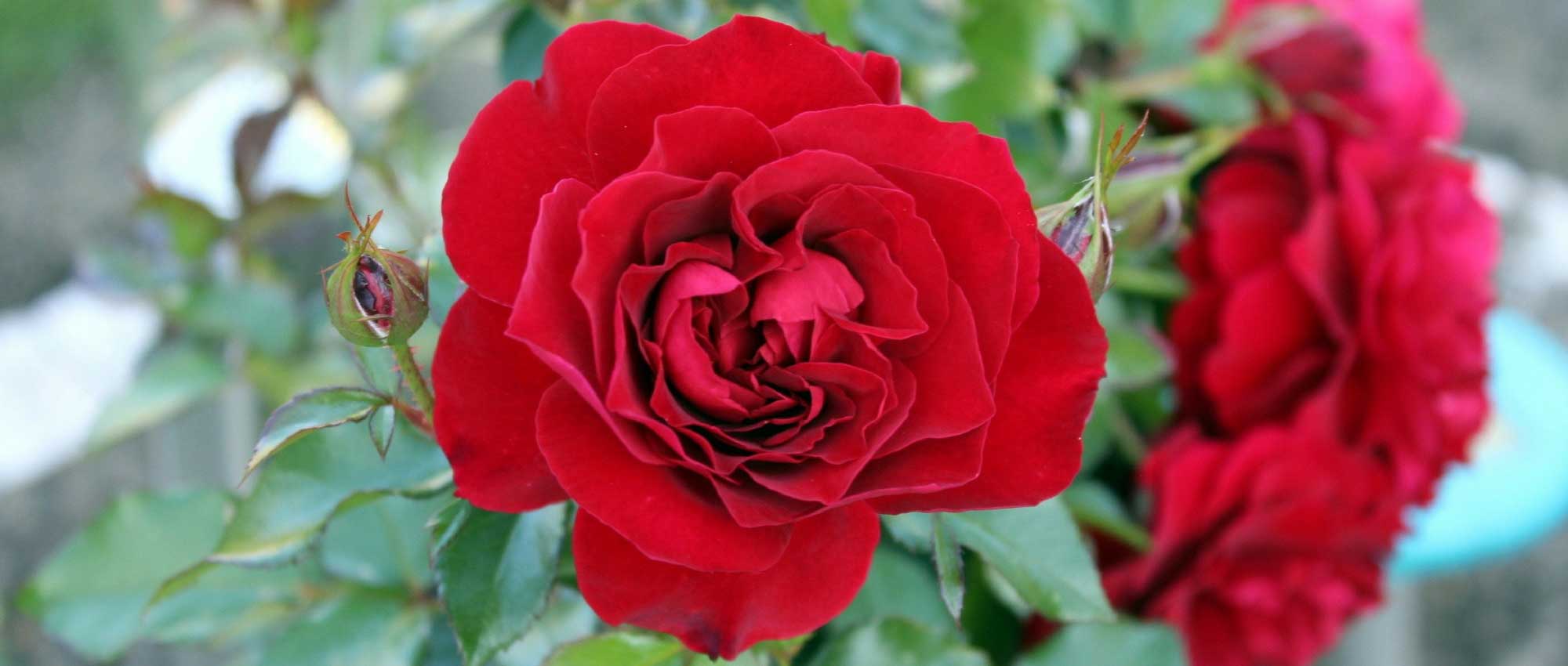

Rosa Sweet Drift - Groundcover Rose
Rosa Sweet Drift - Groundcover Rose
Rosa 'Meiswetdom' SWEET DRIFT®
Groundcover Rose
Special offer!
Receive a €20 voucher for any order over €90 (excluding delivery costs, credit notes, and plastic-free options)!
1- Add your favorite plants to your cart.
2- Once you have reached €90, confirm your order (you can even choose the delivery date!).
3- As soon as your order is shipped, you will receive an email containing your voucher code, valid for 3 months (90 days).
Your voucher is unique and can only be used once, for any order with a minimum value of €20, excluding delivery costs.
Can be combined with other current offers, non-divisible and non-refundable.
We guarantee the quality of our plants for a full growing cycle, and will replace at our expense any plant that fails to recover under normal climatic and planting conditions.

Description
The Sweet Drift® Groundcover Rose is a compact and floriferous variety ideal for enhancing flowerbeds, borders, rockeries, and planters. Its soft pink, strongly double flowers with around 87 petals measure approximately 6 cm in diameter. They bloom continuously from spring until the first frosts. The dense, glossy dark green foliage offers excellent disease resistance, ensuring a neat appearance throughout the season. This versatile and easy-to-grow rose integrates harmoniously into various landscape designs, adding a romantic and elegant touch.
Belonging to the Rosaceae family, the 'Meiswetdom' Sweet Drift Rose is a creation by Meilland. This rose forms a low, spreading bush reaching 30 to 40 cm in height and 50 to 60 cm in spread. Its short, ramified stems support inflorescences in clusters of 5 to 10 flowers, each formed of numerous petals arranged in an open cup. The soft pink flowers when in full bloom retain their gentle hue throughout their flowering, offering a stable and attractive colour. Flowering begins in spring and recurs in successive waves until the first frosts. The deciduous, glossy dark green foliage is particularly disease-resistant, especially to powdery mildew and black spot, making it a robust and reliable plant. Thanks to its good hardiness, the Sweet Drift can withstand temperatures as low as -18°C, allowing it to thrive in most temperate climates. Unlike some varieties with overly flexible stems, this rose maintains a beautiful compact structure, making it easy to integrate into landscape designs.
The Sweet Drift Rose can adapt to a wide range of soils provided that they are well-drained. It enjoys a sunny position but tolerates light shade in summer, particularly in very hot climates. Mulching at the base will help retain soil moisture and prolong flowering. With its luminous soft pink roses, the Sweet Drift pairs particularly well with pastel tones and grey-green foliage. In flower beds, it elegantly complements perennial geraniums (‘Rozanne’, ‘Dreamland’), catmints, or Russian sages, offering a soft and natural contrast. It also accompanies perfectly white or cream shrub roses, creating a romantic and refined effect. Along pathways or hedges, it pairs well with light groundcover plants like sedums and creeping bellflowers, for a diverse floral carpet. In rockeries, it combines beautifully with spurges or lavenders, harmoniously bringing structure to the space. Grown in pots on a patio or balcony, it forms a small, abundantly flowering bush, perfect for a compact yet highly floral space. Thanks to its rapid growth and dense groundcover effect, it is ideal for stabilising small slopes or highlighting flower bed borders. Planted in groups of three to five, it ensures a spectacular carpeting effect, perfect for a cottage or romantic-style garden.
Plant habit
Flowering
Foliage
Botanical data
Rosa
'Meiswetdom' SWEET DRIFT®
Rosaceae
Groundcover Rose
Rosa SWEET DRIFT
Cultivar or hybrid
Planting and care
To plant your Sweet Drift rose, prepare the soil by digging a 25 cm cube, breaking up the earth well and adding a base amendment such as dried blood or dehydrated horn at the bottom of the planting hole. Position your plant after removing it from its pot, covering the top of the root ball with 3 cm of soil, backfill and water thoroughly to eliminate any air pockets. During dry weather, water regularly for a few weeks to encourage root establishment. Also consider feeding your rose with a special rose fertiliser to promote flowering. Naturally disease-resistant, it does not require fungicidal treatments.
Roses often develop spots or look unsightly by late summer, but this does not affect their growth. These spots are not harmful to the rose; it's a natural phenomenon. Follow all our advice to address this issue and read our article: Help: My Roses Have Spots
Planting period
Intended location
Care
Planting & care advice
This item has not been reviewed yet - be the first to leave a review about it.
Similar products
Haven't found what you were looking for?
Hardiness is the lowest winter temperature a plant can endure without suffering serious damage or even dying. However, hardiness is affected by location (a sheltered area, such as a patio), protection (winter cover) and soil type (hardiness is improved by well-drained soil).

Photo Sharing Terms & Conditions
In order to encourage gardeners to interact and share their experiences, Promesse de fleurs offers various media enabling content to be uploaded onto its Site - in particular via the ‘Photo sharing’ module.
The User agrees to refrain from:
- Posting any content that is illegal, prejudicial, insulting, racist, inciteful to hatred, revisionist, contrary to public decency, that infringes on privacy or on the privacy rights of third parties, in particular the publicity rights of persons and goods, intellectual property rights, or the right to privacy.
- Submitting content on behalf of a third party;
- Impersonate the identity of a third party and/or publish any personal information about a third party;
In general, the User undertakes to refrain from any unethical behaviour.
All Content (in particular text, comments, files, images, photos, videos, creative works, etc.), which may be subject to property or intellectual property rights, image or other private rights, shall remain the property of the User, subject to the limited rights granted by the terms of the licence granted by Promesse de fleurs as stated below. Users are at liberty to publish or not to publish such Content on the Site, notably via the ‘Photo Sharing’ facility, and accept that this Content shall be made public and freely accessible, notably on the Internet.
Users further acknowledge, undertake to have ,and guarantee that they hold all necessary rights and permissions to publish such material on the Site, in particular with regard to the legislation in force pertaining to any privacy, property, intellectual property, image, or contractual rights, or rights of any other nature. By publishing such Content on the Site, Users acknowledge accepting full liability as publishers of the Content within the meaning of the law, and grant Promesse de fleurs, free of charge, an inclusive, worldwide licence for the said Content for the entire duration of its publication, including all reproduction, representation, up/downloading, displaying, performing, transmission, and storage rights.
Users also grant permission for their name to be linked to the Content and accept that this link may not always be made available.
By engaging in posting material, Users consent to their Content becoming automatically accessible on the Internet, in particular on other sites and/or blogs and/or web pages of the Promesse de fleurs site, including in particular social pages and the Promesse de fleurs catalogue.
Users may secure the removal of entrusted content free of charge by issuing a simple request via our contact form.
The flowering period indicated on our website applies to countries and regions located in USDA zone 8 (France, the United Kingdom, Ireland, the Netherlands, etc.)
It will vary according to where you live:
- In zones 9 to 10 (Italy, Spain, Greece, etc.), flowering will occur about 2 to 4 weeks earlier.
- In zones 6 to 7 (Germany, Poland, Slovenia, and lower mountainous regions), flowering will be delayed by 2 to 3 weeks.
- In zone 5 (Central Europe, Scandinavia), blooming will be delayed by 3 to 5 weeks.
In temperate climates, pruning of spring-flowering shrubs (forsythia, spireas, etc.) should be done just after flowering.
Pruning of summer-flowering shrubs (Indian Lilac, Perovskia, etc.) can be done in winter or spring.
In cold regions as well as with frost-sensitive plants, avoid pruning too early when severe frosts may still occur.
The planting period indicated on our website applies to countries and regions located in USDA zone 8 (France, United Kingdom, Ireland, Netherlands).
It will vary according to where you live:
- In Mediterranean zones (Marseille, Madrid, Milan, etc.), autumn and winter are the best planting periods.
- In continental zones (Strasbourg, Munich, Vienna, etc.), delay planting by 2 to 3 weeks in spring and bring it forward by 2 to 4 weeks in autumn.
- In mountainous regions (the Alps, Pyrenees, Carpathians, etc.), it is best to plant in late spring (May-June) or late summer (August-September).
The harvesting period indicated on our website applies to countries and regions in USDA zone 8 (France, England, Ireland, the Netherlands).
In colder areas (Scandinavia, Poland, Austria...) fruit and vegetable harvests are likely to be delayed by 3-4 weeks.
In warmer areas (Italy, Spain, Greece, etc.), harvesting will probably take place earlier, depending on weather conditions.
The sowing periods indicated on our website apply to countries and regions within USDA Zone 8 (France, UK, Ireland, Netherlands).
In colder areas (Scandinavia, Poland, Austria...), delay any outdoor sowing by 3-4 weeks, or sow under glass.
In warmer climes (Italy, Spain, Greece, etc.), bring outdoor sowing forward by a few weeks.

















































